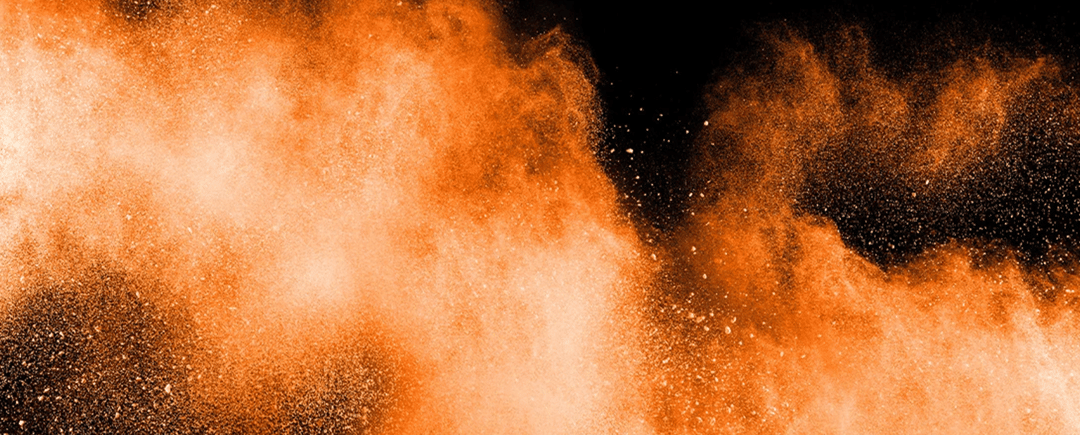For those who fully appreciate the danger of combustible dust, it’s the kind of workplace hazard that can keep you up at night. If you work anywhere that has flammable particulate matter floating around in the air, it’s a risk to your workers that you should not underestimate.
What Is Combustible Dust?
Anything that can potentially catch fire that is in particulate form is considered combustible dust. There are a wide range of industries where combustible dust is a regular part of the work; anywhere that has major processing going on is likely to be a danger zone. Think plants and factories that process or manufacture perfume, natural gas, sugar, wheat, aluminum, cornstarch, coffee, sawdust, resin, mining, etc. When airborne, all these products are ignitable sources of fuel that can wreak devastating havoc if an errant spark sets off an explosion.
Hopefully you practice fire safety in your own home, particularly around open flames, but if you have ever witnessed someone spray a lot of perfume near a candle, you know that it can cause a small flash fire. Now imagine that on a grand scale: a sugar plant, hazy with sugar dust lingering in the air. It’s winter in the Midwest, humidity is low, and static electricity causes a spark that ignites the sugar dust. The whole plant explodes.
So how do you avoid a combustible dust catastrophe? As experts in the safety industry, our aim is not to fearmonger with tales of destruction, but we do want to make it clear that the risk is real and should be taken seriously. Like other risks that may be relatively uncommon but especially awful when they occur, it can be easy to think, “It won’t happen to me.” But by allowing a relaxed approach to seep into your safety culture, you’re quite probably increasing the risk of an incident, making it a potentially less rare occurrence in your workplace. That’s why it’s so important to take appropriate, recommended measures to handle the combustible dust in your environment before it becomes a life threatening event.
Mitigating Combustible Dust Risk
The first step to lowering the risk of a combustible dust explosion to your employees is to have a solid safety culture in place, complete with an effective communication strategy that ensures everyone is on the same page and equally committed to upholding the highest safety standards. Then you need to ensure that you are adhering to whatever safety standards govern your industry. In general, adequate ventilation, humidity control, and proper PPE are all important measures to take.
For processing plants north of the Mason Dixon line in the winter, low humidity increases the risk of combustible dust ignition; therefore, you need to ensure that your plant’s internal humidity is properly monitored and controlled in those dry winter months. No matter where your plant is located, ventilation serves to move particulate matter out of the interior air, reducing the potential fuel should a flame or spark enter the environment. And proper attention should be paid to reducing the risk of static electricity in dryer environments by grounding tools, equipment, floors, and personnel. That includes wearing the right PPE with conductive shoes and gloves, and FR garments to protect workers in the event of a fire to give them more time to escape.
The Importance of FR Fabrics
Workers in industries that have an elevated risk of combustible dust related incidents are especially vulnerable to a sudden flash fire, or worse, an explosion. It is of utmost importance that they are equipped in proper protective workwear and equipment that will give them the best chance at getting out of danger as quickly as possible. That means their garments need to not only be made of FR fabric that meets the highest standards of protection, but they also need to be clothing they are comfortable wearing properly. A successful PPE workwear program involves taking a close look at every component, from the fabric to the finishings to the communication strategy around how your workers should be wearing their garments to give them the full protective benefits of the garments.
Strategize to Mitigate Risk with TenCate Protective Fabrics
We know safety managers work hard to create and maintain strong, zero injury safety cultures. That’s why we work hard to not only offer the most advanced protection in FR fabrics, but also to be a resource for safety managers to use to build better safety strategies. We spend a lot of time talking to safety managers, whether offering guidance on which FR fabrics offer their workers the best protection against risks like combustible dust explosions, or taking a holistic look at their safety programs and giving feedback based on years of experience and knowledge in the safety industry. Browse our blogs to learn more about the safety topics you care about, or reach out to a TenCate Protective Fabrics expert with questions about how to strengthen your safety culture.





.png?width=399&name=Untitled%20design%20(40).png)


